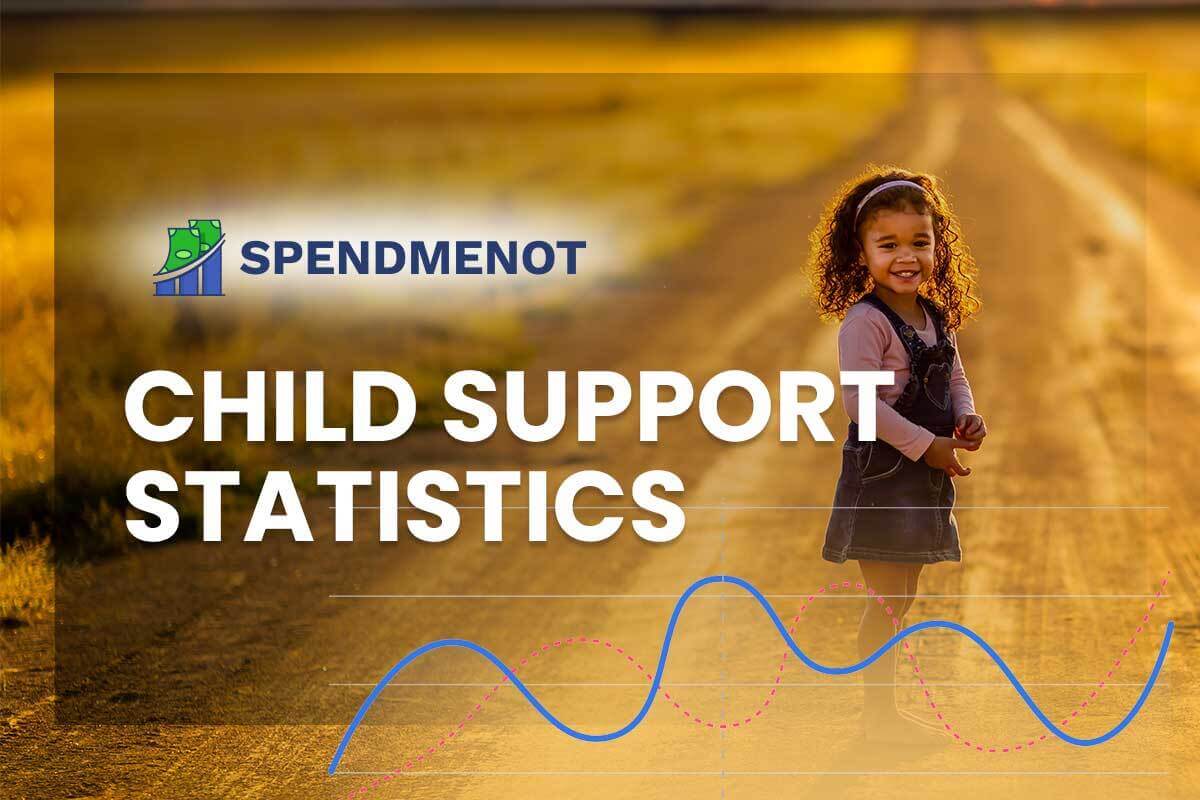23+ Consumer Debt Statistics That Will Shock You in 2023
Last Updated: March 10, 2023
Consumer Debt Statistics: Mortgages, Credit Cards, Student Debt, Personal Loans, and More!
Detailed Consumer Debt Statistics (US, UK, Canada)
Overview of Credit Card Debt
Student Debt and Its Effect on Consumer Debt Statistics
Miscellaneous Consumer Debt Statistics to Add to the Mix!
How does US Consumer Debt affect people’s wellbeing?
How COVID-19 Affected Debt in the US
Wrapping Up
Money makes the world go round, right? However, if you owe more than you can afford, that’s a problem!
Here are some consumer debt statistics that show some fascinating stuff that you may not have known about various types of debt.
Whether you want to shrink your debt or simply understand what it’s all about, we’ve got a lot of information that can help you decide if your debt is as bad as you think.
Consumer Debt Statistics (Editor’s Choice):
- US consumer debt reached $4.2 trillion in February 2021
- Current American credit card debt sits at $974.4 billion
- On average, an American with debt owes $26,621
- 61% of Americans now own at least one credit card
- In 2020, outstanding student debt totaled $1.57 trillion
- NerdWallet released a study showing the average US household has $135,065 of debt
- Total US mortgage debt stands at $14.56 trillion
- Credit card debt dropped 14% compared to last year
If you want to learn how debt affects your day-to-day life, get a cup of coffee and start scrolling, it’s time to relax and do a little learning!
No matter where you are in the world, the term you’ll want to know this! Whether you want to shrink your debt or simply understand you’re not alone, read on and don’t be afraid to do a little bit of learning.
Consumer Debt Statistics: Mortgages, Credit Cards, Student Debt, Personal Loans, and More!
So, now that you’ve seen just how deep we’re in debt, let’s talk about what consumer debt in 2020 looked like. We will also cover how national consumer debt impacts the economy daily. Ready? Let’s go!
1. US non-mortgage consumer debt reached $4.2 trillion.
(Source: Federal Reserve)
Consumer debt is the sum of revolving and non-revolving debt. The former consists of credit card debt, while the latter covers everything else, such as car, school, and personal loans. The non-revolving part rose by 7.3% to $3.23 trillion.
This means that right now, the population in the US owes a shocking total of $4.2 trillion in non-mortgage debt. Almost a full trillion of this huge sum is credit card debt, and there’s a constant tendency for it to grow!
But wait, it gets worse. This doesn’t include mortgage debt.
2. The total US household debt now sits at $14.56 trillion.
(Source: Federal Reserve of New York)
Unfortunately, this is one of the most important consumer debt statistics that affect the whole economy. It includes both non-mortgage and mortgage debt. This is a record high, and it has been steadily increasing since 2013 when it was $11.15 trillion.
3. Since 2008, the total US household debt has risen by $1.88 trillion.
(Source: Federal Reserve of New York)
This goes to show that since the crash of the 2008 recession, debt and borrowing have continued growing. This is unsurprising since standard life expenses have only increased in costs while wages stagnated.
4. The average American home size has been steadily increasing, correlating with growing mortgages.
(Source: Statista)
If you look at the size of an average American home just 20 years ago, you’ll see a significant difference. Home sizes have been constantly growing, with occasional dip. The current size is about 25% larger than in 2000.
The mortgage debt has been growing with it, more than doubling in the same period compounding the growing consumer debt problem. While the causative link is hard to prove, it can’t be dismissed either. Growing costs per square foot and growing surface area together have caused homes to skyrocket in price, necessitating larger mortgages.
Detailed Consumer Debt Statistics (US, UK, Canada)
Now that we’ve covered the overall debt in the US, let’s check out some more personal statistics. And what about the UK and Canada?
5. In 2020, the average debt per person who has debt is $26,621.
(Source: Northwestern Mutual)
Not counting their mortgage, the average American in debt owes over $26,000.
There is a noticeable downward trend over the years. In 2019, the average indebted American owed $29,800, while in the year previous, the number stood at the staggering $38,000.
Are things getting better? Possibly, but 58% of Americans in debt say their debt has significantly impacted their financial stability.
6. In the UK, an average adult owes £32,087.
(Source: The Money Charity)
Hopping over to the other side of the pond, the UK has something to worry about with over £30,000 personal debt per adult, which is 107.6% of average earnings. This debt includes personal loans and auto loans.
The level of debt currently relates to a decade of wage freezes in a range of sectors as well as the growing rate of interest and bills. There just doesn’t seem to be much of a balance. This is pushing debt higher and higher.
7. In January 2021, The UK outstanding credit card balances dropped by 22.4%, year on year.
(Source: The Money Charity)
At least when it comes to credit cards, the British seem to be managing their personal debts better. The average credit card debt in the UK is £2,009 per household and £1,057 per individual.
8. US non-revolving debt now totals more than $3.2 trillion.
(Source: Federal Reserve)
Non-revolving debt is paid off monthly, like personal loans or car loans, and it’s currently over three times higher than credit card debt.
Unlike revolving debt, it has been increasing steadily over the years, with a dip in 2019. Right now, non-revolving debt has exceeded its pre-dip low and has continued to grow.
9. American consumer debt is at 78% of the US GDP.
(Source: Trading Economics)
The average household debt was at its highest in 2007. Back then, the rate of consumer debt was 98.6% of the GDP in America.
In fact, the best figures were shown in 1952. This was when the consumer debt was only 23.8% of the GDP.
10. Americans have more personal debt than they do income.
(Source: Debt.org)
The average American household owes $135,768. Since the median income for the average American household sits at $61,372, it’s clear that the debt by far outstrips income.
The rising US personal debt presents a very problematic situation for low-income families who use it to stay afloat…
11. Americans have to allocate 33% of their income to debt payments.
(Source: Northwestern Mutual)
The anxiety surrounding US household debt means that 13% of Americans believe that they’ll owe money to someone else for the rest of their lives.
Almost half of Americans (49%) aren’t sure how much they can afford to spend, so 27% hold back on spending while 22% just spend and hope for the best.
12. Canadian household debt is 170.7% of average disposable income.
(Source: Bloomberg)
As large as it is, that’s still lower than 181% from 2019. With people spending more time at home, having more cash, and spending less, they’re able to pay down some of their consumer debt.
Overview of Credit Card Debt
Consumer debt includes outstanding credit card balance, and it makes up a big slice of debt pie! Let’s look closer at the average American credit card debt statistics:
13. At least 61% of Americans own at least one credit card.
(Source: The Ascent)
Unsurprisingly, people with higher FICOs tend to have more than one. The number of credit card holders is constantly growing, and with stagnant wages, people turn to credit cards for short-term boosts to their payment power. Those who do try to minimize their expenses by using low or zero-interest credit cards.
14. Debt statistics show the total revolving US consumer debt is $974.4 billion.
(Source: Federal Reserve)
Currently, the level of revolving consumer debt amounts to $4,602 of credit card debt per citizen with a credit card.
After a peak in 2019, the revolving consumer debt levels have started dropping among Americans. In just a year, they dropped by over $100 billion. This could be just a hiccup caused by the pandemic or an indication of an ongoing trend.
15. An average American has almost four credit cards.
(Source: Experian)
The exact number is 3.84, and it’s actually 4% lower than in 2019. There’s a noticeable trend of Americans relying less on credit card debt due to the financial uncertainty caused by the coronavirus pandemic.
Again, people with higher FICO scores usually have more credit cards as they’re usually better off and can afford the necessary payments.
16. Credit card debt statistics show that the average credit card balance per person reached $5,315.
(Source: Experian)
That’s a 14% drop compared to the 2019 high of $6,194. This decrease was seen across the entire country, With Washington, DC residents having their credit card debts shrinking by the highest amount of 20%, and North Dakotans’ dropping by the lowest amount of 8%.
17. Since 2011, the average American credit card debt has grown by 14%.
(Source: ValuePenguin)
It reached a low in 2013, ending the drop caused by the economic crash of 2008. Since then, the credit card debt has been growing until 2020, when it dropped again, likely caused by the coronavirus pandemic.
Student Debt and Its Effect on Consumer Debt Statistics
People take student loans in hopes they’ll secure a better future, but everything comes at a price. Many Americans struggle with crushing student debt, especially Millennials and Gen Z.
18. The outstanding student loan debt reached $1.57 trillion in 2020.
(Source: Experian)
Student loans are how most people get through higher education in America. However, with the rising costs of education and stagnating wages, the debt is only increasing.
Student debt affects borrowers of all age groups. It’s important to make informed decisions about taking student loans, as it can have a big impact on your future.
19. In the UK, outstanding student debt sits at £140 million as of March 2020.
(Source: House of Commons Library)
Similarly to the situation in the US, student finance has a significant impact on the UK consumer debt statistics.
Due to the increasing costs of student life and the growing interest, outstanding student loan debt is expected to reach £560 million by the middle of this century.
20. The UK government only expects 25% of current undergrads to repay their loans.
(Source: House of Commons Library)
In the UK, the government believes that about a quarter of current students will be able to repay their student debt. This is a drop from 30% that was expected the year previous.
21. US personal debt statistics show that 16% of people with student loan debt need parents’ help to pay it off.
(Source: Northwestern Mutual)
This is unsurprising considering most parents start saving for their children’s college quite early. Additionally, more Millennials and Gen Z-ers report needing parental help at a slightly higher rate than average — 19% and 31%, respectively.
Miscellaneous Consumer Debt Statistics to Add to the Mix!
Let’s cover some other contributing factors of the looming national consumer debt crisis in the US.
22. Auto loan debt reached $1.31 trillion in Q4 2020.
(Source: Federal Reserve)
This is divided into 250 million separate loan accounts, and 5% are seriously delinquent. Unsurprisingly, the total has increased by $14 billion since the previous quarter. Car loans make up 9% of the total consumer debt.
23. Gen X is the most indebted generation with almost 7 trillion in debt.
(Source: New York Federal Reserve)
This is more debt than Gen Z and Millennials combined. However, consumer debt statistics indicate that their debt has been holding fairly steady, only growing 3.5%. The younger generations, on the other hand, have rapidly growing levels of debt.
24. Gen Z debt has grown by 67.2% from 2019 to 2020.
(Source: Experian)
That’s almost six times higher rate of growth than millennials, who are at 11.5%. The compounding issue is relatively low homeownership among both Millennials and Gen Z, meaning they have fewer assets to fall back on.
How does US Consumer Debt affect people’s wellbeing?
Debt definitely affects people’s overall mental, emotional, and even physical health — and not for the better.
Let’s take a look at the numbers.
25. 60% of US adults are anxious about their level of debt.
(Source: Northwestern Mutual)
It’s clear that a large percentage of people are troubled by their financial situation, and debt just compounds the issue. Average debt in America is so bad that 31% of Americans say they feel depressed at least once a month due to financial anxiety.
26. 97% of people with debt believe they would be happier without debt.
(Source: The Ascent)
This is an understandable figure, considering the link between stress and being in debt. This is borne out by the fact that people without debt tend to have more positive outlooks and life satisfaction than people who have debt.
27. 49% of people with credit card debt blame themselves for it.
(Source: The Ascent)
Out of all types of debt, respondents felt most guilty for accruing debt on their credit cards as they feel they’re entirely responsible for ending up in that situation. In addition to that, 69% of people struggling to pay off their credit card balances feel ashamed of that.
How COVID-19 Affected Debt in the US
US debt statistics show that Americans seem to be saving more and spending less since the pandemic hit. Despite the massive job loss, the ongoing recession, and the hit to the economy, credit card balances are down, and bank balances are reaching record highs.
Let’s have a closer look.
28. Outstanding consumer loans fell by $3.5 billion in 2020.
(Source: Reuters)
This is a two-year low of $1.513 trillion. When combined with the fact that credit card debt is also down, this indicates that Americans aren’t taking on more debt and are, in fact, consolidating and paying off what debt they have.
The pandemic has forced people into the saving mode, and people only take on new debt if they have to.
29. 14% of Americans went deeper into debt in an attempt to mitigate the impact of COVID-19.
(Source: Federation of American Scientists)
The impact of the coronavirus pandemic was devastating for the economy, with unemployment rising to a peak of 14.7% in April 2020 — and it hasn’t really returned to the pre-pandemic levels even a full year later.
A significant portion of Americans had to dip into their savings, some had to take out new loans, and others had to request loan forbearance to stay afloat.
Wrapping Up
While consumer debt has a constant tendency to grow, the coronavirus pandemic seems to have stemmed the tide somewhat and even reduced it in some cases. Despite this new drop, it’s still eating up a large portion of the average American consumer’s income, and many people are struggling with it.
Understanding debt and doing something about it before you approach bankruptcy are two different things. Now that you know the major factors impacting consumer debt statistics, you can course-correct and start saving money the right way.
Sources
- Bloomberg
- Debt.org
- Experian
- Experian
- Experian
- Federal Reserve
- Federal Reserve
- Federal Reserve
- Federal Reserve Bank of New York
- Federation of American Scientists
- House of Commons Library
- Northwestern Mutual
- Federal Reserve Bank of New York
- Reuters
- Statista
- The Ascent
- The Ascent
- The Money Charity
- Trading Economics
- ValuePenguin










